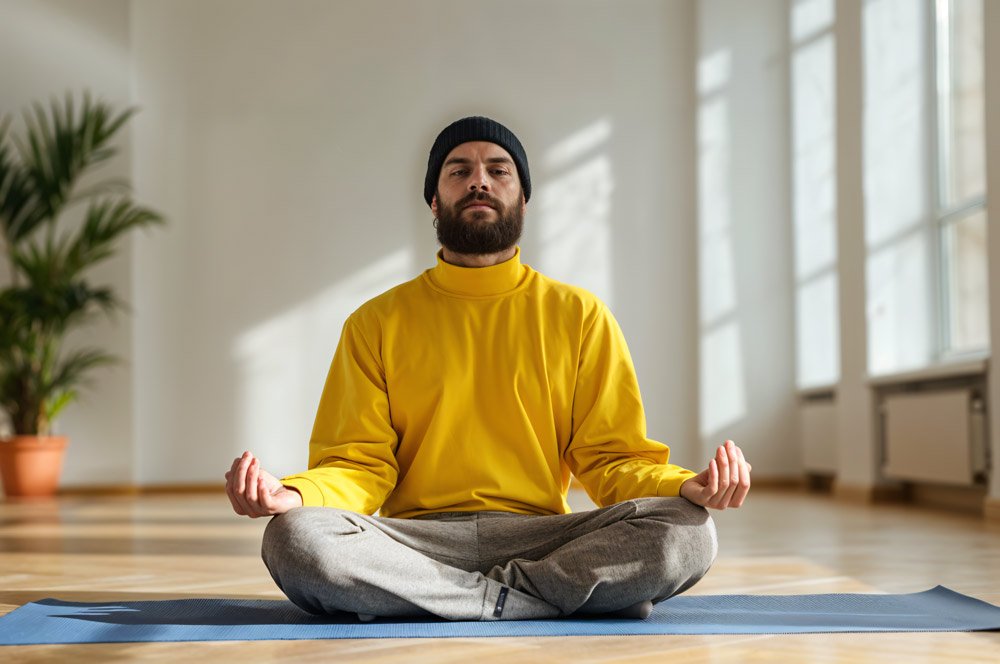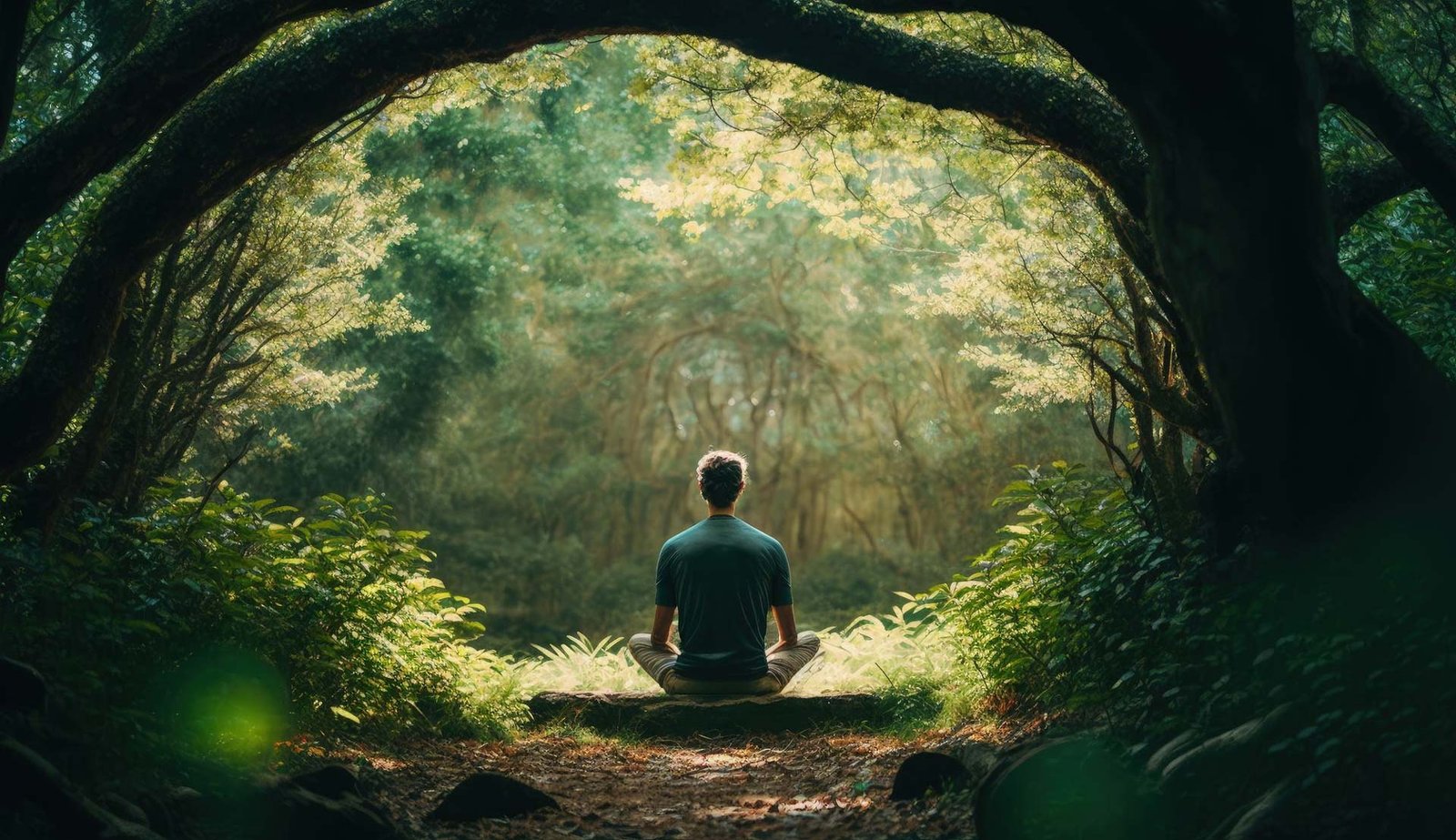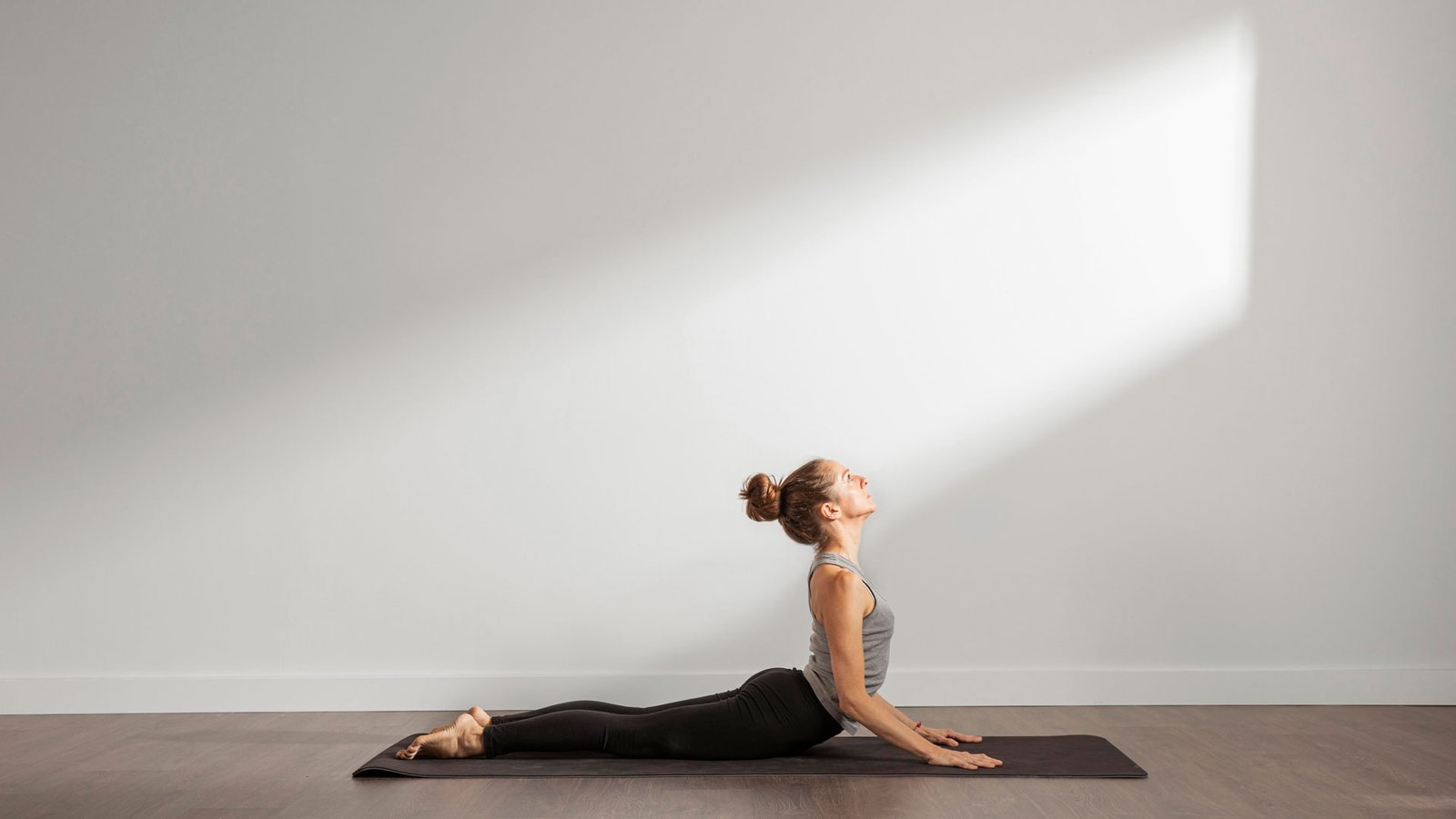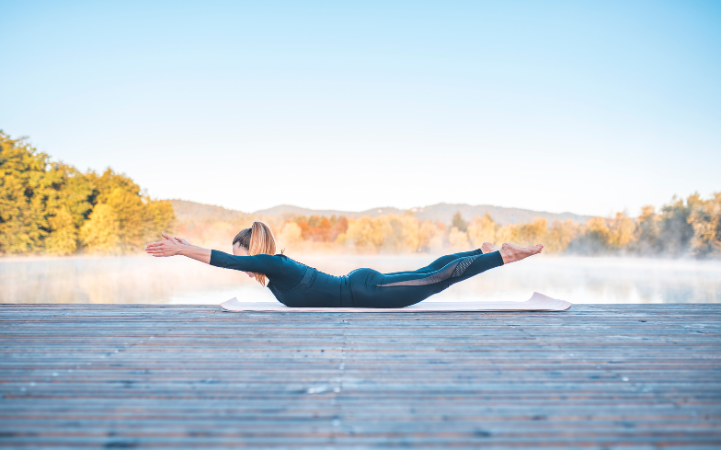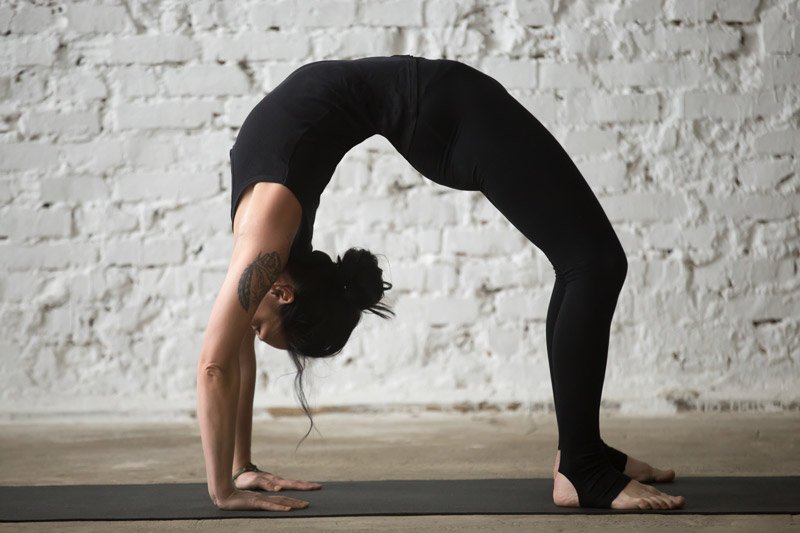Sukhasana, or Easy Pose, is a simple cross-legged sitting posture that promotes relaxation, stability, and mindfulness. Rooted in the Sanskrit words Sukha (ease, comfort, or happiness) and Asana (pose), it is often used as a starting position for meditation, pranayama, or seated yoga practices. Its accessibility makes it suitable for practitioners of all levels, encouraging a connection between the body, mind, and breath.
Steps to Perform Sukhasana
- Choose a Comfortable Space: Sit on a yoga mat, blanket, or cushion to elevate your hips slightly and provide support.
- Cross Your Legs: Sit with your legs crossed, allowing your knees to drop naturally toward the ground. If one leg feels more comfortable on top, alternate regularly to balance both sides.
- Position Your Hands: Rest your hands on your knees or thighs with palms facing up or down. You may also form a mudra, such as Chin Mudra (thumb and index finger touching).
- Align Your Spine: Sit upright with your back straight, shoulders relaxed, and chest slightly lifted.
- Relax Your Body: Close your eyes or keep a soft gaze, releasing tension in your face, jaw, and shoulders.
- Focus on Your Breath: Breathe deeply and evenly, directing your attention inward.
- Hold the Pose: Stay in Sukhasana for as long as it feels comfortable, ideally starting with 5–10 minutes and gradually increasing over time.
Benefits of Sukhasana
- Encourages Relaxation: Creates a calming effect on the mind, reducing stress and anxiety.
- Supports Meditation: Provides a stable base for meditation and mindfulness practices.
- Improves Posture: Strengthens the back and core muscles, promoting a naturally upright posture.
- Enhances Flexibility: Gently stretches the hips, knees, and ankles, improving lower body mobility.
- Promotes Mental Clarity: Fosters focus and concentration by anchoring attention on the breath.
- Stimulates the Parasympathetic Nervous System: Encourages a state of rest and relaxation, helping to lower blood pressure and heart rate.
- Improves Breathing: Opens the chest and diaphragm, facilitating deeper, more efficient breathing.
- Balances Energy Flow: Aligns the body for optimal energy flow, supporting prana (life force) movement.
Tips for Practicing Sukhasana
- Use Support: Sit on a cushion, folded blanket, or yoga block to elevate your hips and reduce strain on your knees.
- Alternate Leg Cross: Switch the cross of your legs regularly to avoid imbalances in the hips and knees.
- Focus on Alignment: Ensure your spine remains straight and avoid slouching to prevent discomfort.
- Relax Your Body: Release tension in your shoulders, neck, and face to deepen your relaxation.
- Start Slowly: If sitting cross-legged feels uncomfortable, begin with short durations and gradually increase as your flexibility improves.
- Engage the Core: Lightly activate your abdominal muscles to support your posture.
- Breathe Mindfully: Maintain steady, deep breaths to stay present and grounded.
Cautions and Contraindications
- Knee or Hip Pain: Avoid the pose if you experience discomfort in your knees or hips. Use props or modify the posture to suit your body’s needs.
- Back Issues: Support your lower back with a cushion or sit against a wall if maintaining an upright posture is challenging.
- Tight Hips: Practice preparatory poses such as Butterfly Pose (Baddha Konasana) or Seated Forward Bend (Paschimottanasana) to improve hip flexibility.
- Circulation Issues: Avoid prolonged sitting in Sukhasana if it causes numbness or tingling in your legs; adjust your position or take breaks.
- Pregnancy: Pregnant practitioners should ensure comfort and avoid compressing the abdomen by using props or adopting a wider seated stance.
- Joint Stiffness: Those with arthritis or joint stiffness may benefit from sitting on a chair instead of the floor.
Sukhasana is a versatile and accessible yoga pose that fosters a sense of ease, stability, and mindfulness. While it may appear simple, the pose has profound physical and mental benefits, from improving posture to calming the mind. With regular practice, Sukhasana can become a sanctuary of peace, supporting meditation and relaxation. Remember to honor your body’s limitations, use modifications as needed, and prioritize comfort to fully embrace the essence of this “easy” yet transformative pose.


